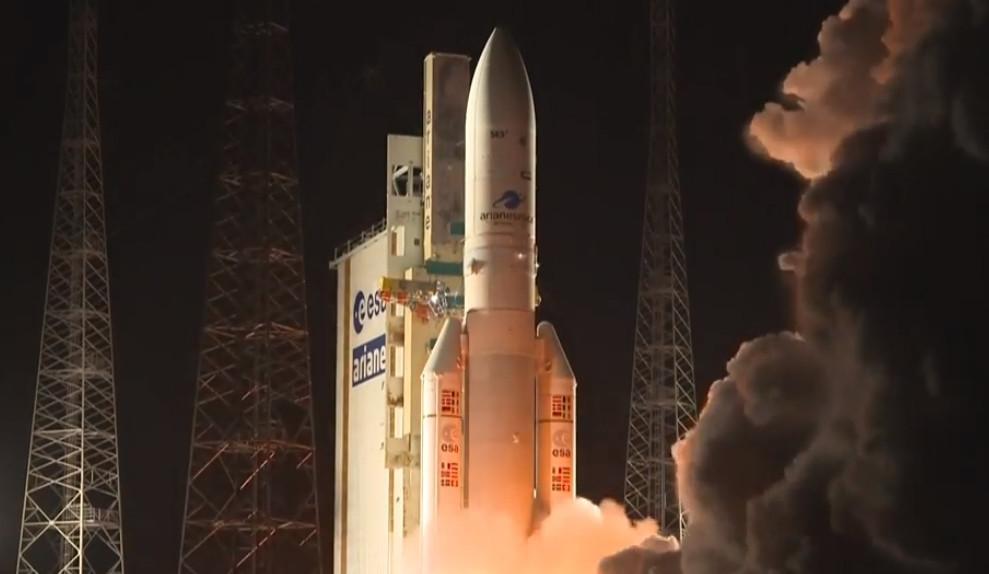Ariane 5 satellites in orbit but not in right location
KOUROU – Agence France-Presse

Two commercial satellites have been placed in orbit by an Ariane 5 rocket but have yet to reach their correct position, Arianespace said Jan. 25, after mission control briefly lost contact with the craft in a rare malfunction.
The usually reliable European space workhorse blasted off at 7:20 pm from the Kourou Space Center in French Guiana carrying satellites for Luxembourg’s SES and the United Arab Emirate’s Yahsat in the first launch of the year for Arianespace.
For nearly 30 minutes mission controllers were left on tenterhooks when the rocket lost contact in what CEO Stephane Israel described as an “anomaly.”
But the team later received good news when the satellites chirped back into radio contact.
“Both satellites were confirmed separated, acquired and they are on orbit,” Arianespace said in an updated statement after the initial lift-off scare.
The French-headquartered company said a tracking station in Brazil was unable to locate the craft shortly after ignition of the rocket’s upper stage.
“This lack of telemetry lasted throughout the rest of powered flight,” the statement said. But both satellites were later “communicating with their respective control centers.”
But a source told AFP the satellites did not detach from the rocket in the correct place after the craft followed an “imperfect trajectory.”
Arianespace said they were currently “repositioning the satellites in the right place using their propulsion systems” adding that their current status was “reassuring after strong concerns.”
Israel had earlier tweeted that the initial launch had been “flawless.”
The SES satellite, built by Airbus in the U.K., weighs more than four tons and is carrying both telecoms equipment as well as a NASA platform designed to explore the boundary between Earth’s atmosphere and space.
Yahat’s Al-Yah 3 satellite weighs in at 3,795 kilograms and also carries telecommunications equipment.
Since it was founded in 1980, Arianespace has put more than 550 satellites into orbit including for Europe’s Galileo GPS system. The company posted sales of approximately 1.3 billion euros ($1.6 billion) in 2017.
The Galileo program, when complete, will have 30 satellites in three orbital planes by 2020.
If all goes according to plan the system will be able to pinpoint a location on Earth to within a meter -- compared to several meters for the United States’ GPS and the Russian GLONASS systems.
First used in 1986, the Ariane 5 vehicle has a strong track record of reliability although the company faces stiff competition from Elon Musk’s SpaceX.
Two recent launches have suffered malfunctions but were shut down before the rocket could lift off.
In September mission control aborted the launch of an Ariane 5 rocket carrying two commercial satellites in the final countdown as the main engine was being ignited.
An Ariane 5 lift-off was also aborted at main engine ignition in March 2011.
The Kourou Space Center has also been hit by strikes. Last year workers in the French territory erected barricades around the space center and delayed the launch of a rocket several times.
Guiana, home to some 250,000 people, has been administered as a French region since the end of the 18th century.
















